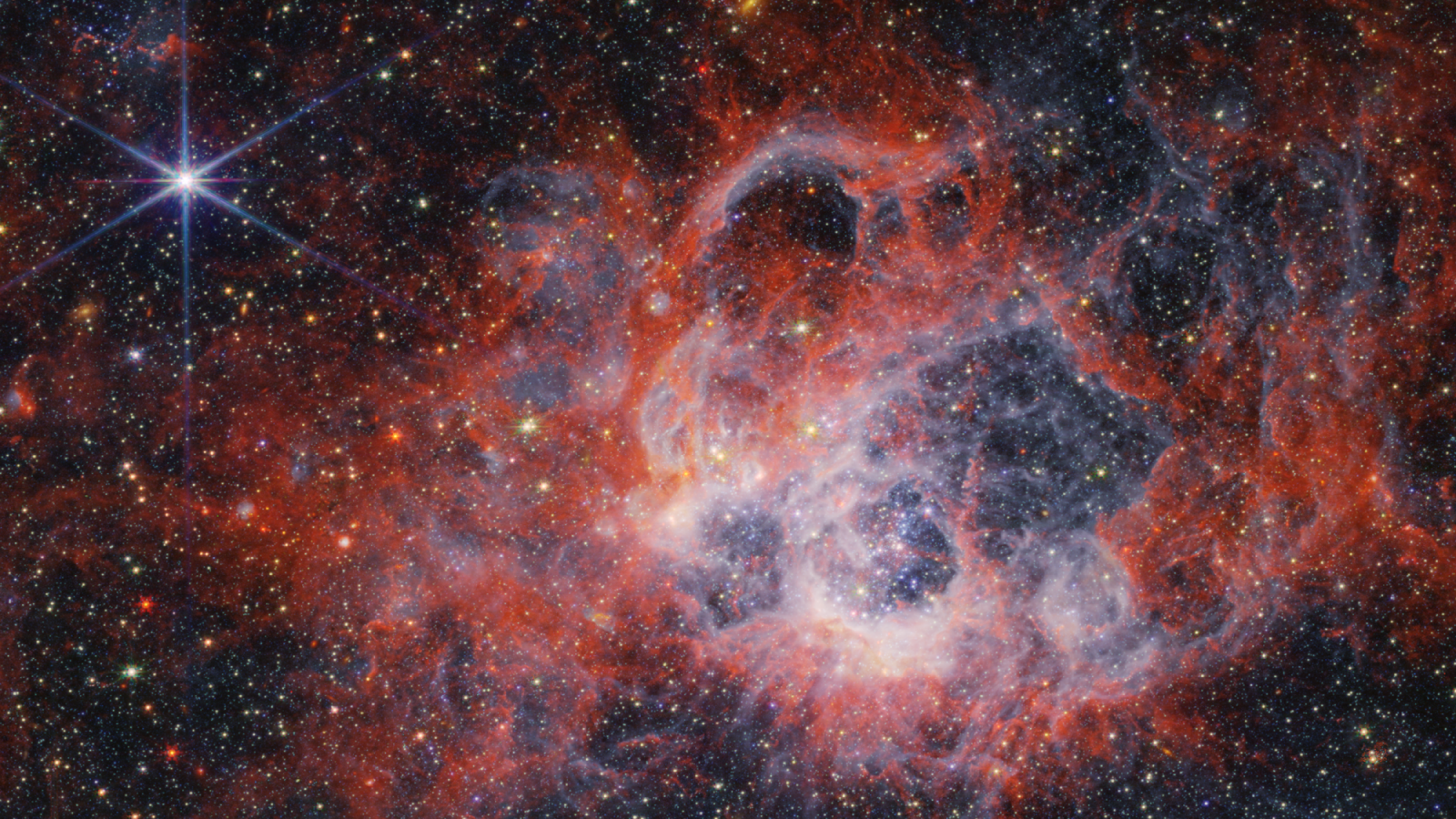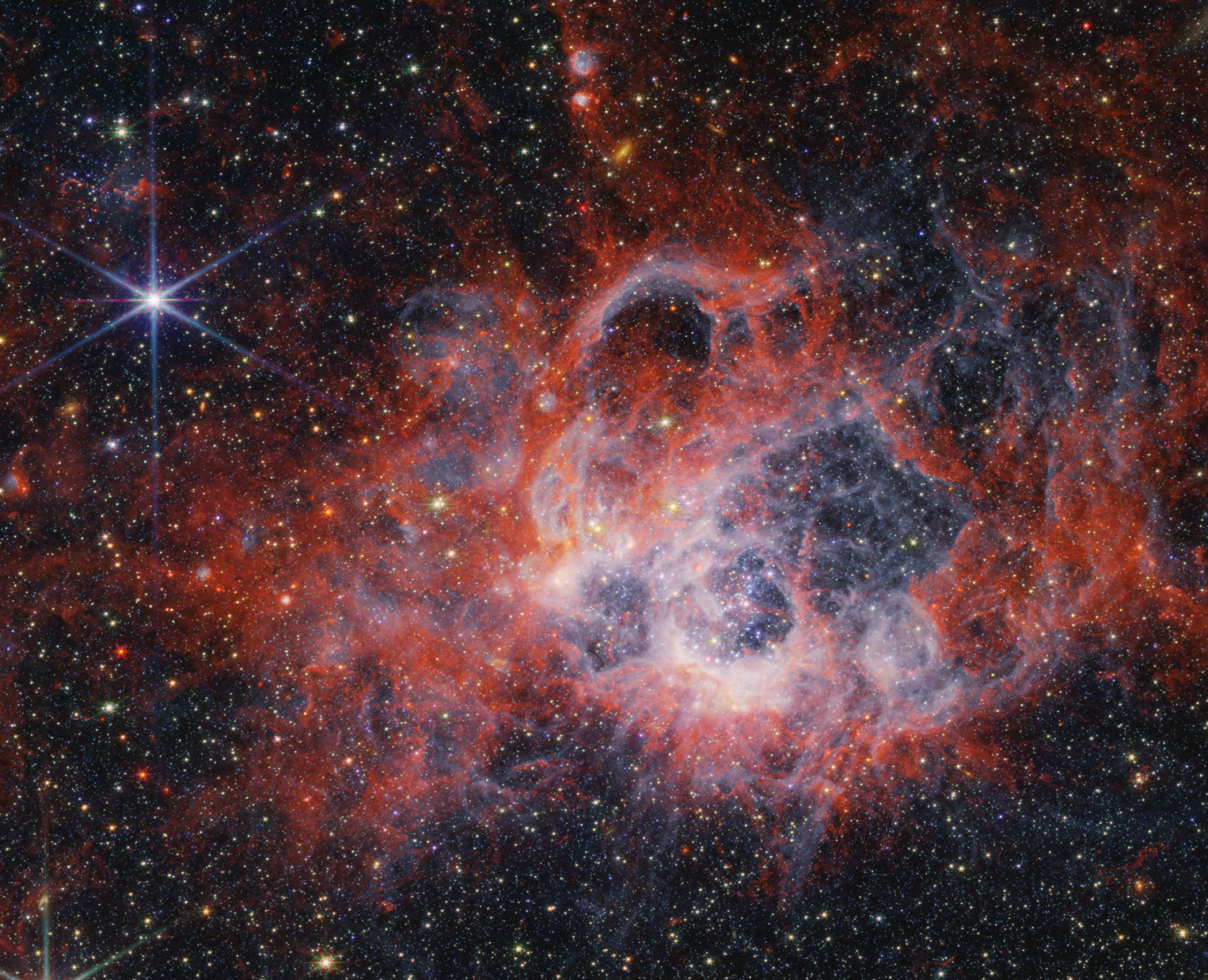James Webb telescope reveals 'Sleeping Beauty' galaxies in the early universe — snoozing where they weren't supposed to exist
Using data from the James Webb Space Telescope, astronomers have discovered dormant galaxies with a wide range of masses in the first billion years after the Big Bang, moving one step closer to understanding how early galaxies grow.

Astronomers have discovered over a dozen "dormant" galaxies that paused their star formation within the first billion years after the Big Bang.
The discovery, made with data from the James Webb Space Telescope (JWST), illuminates a fascinating phase in the lives of early galaxies and could provide more clues about how galaxies evolve.
There are several reasons why galaxies may stop forming new stars. One is the presence of supermassive black holes at their centers. These behemoths emit intense radiation that heats and depletes cold gas, the most important ingredient for star formation. Additionally, larger neighboring galaxies can strip away this cold gas or heat it, leading to a halt in star formation. As a result, these galaxies may remain dormant indefinitely, or become "quenched."
Another reason galaxies become inactive is stellar feedback. That's when the gas in the galaxy gets warmed and expelled due to stellar processes like supernovas, intense stellar winds, or the pressure associated with starlight. The galaxy thus goes through a temporary "quiet" period.
"This is usually a temporary phase, which usually lasts about 25 million years," Alba Covelo Paz, a doctoral student at the University of Geneva and the lead author of a new study describing the findings, told Live Science in an email. Over millions of years, the gas that was pushed out falls back in, and the warm gas cools again. Once there is enough cold gas again, the galaxy can start forming new stars.
While the dormant phase is commonly observed in nearby galaxies, astronomers have found only four dormant galaxies in the first billion years of the universe. Of those, three had masses below a billion solar masses and one had a mass above 10 billion solar masses. The limited observations and scattered properties of dormant galaxies were not sufficient to get a clear picture of early star formation.
Get the world’s most fascinating discoveries delivered straight to your inbox.
But using JWST's sensitive spectroscopic data, an international team of astronomers discovered 14 dormant galaxies with a wide range of masses in the early universe, showing that dormant galaxies are not limited to low or very high mass ranges.
The findings were uploaded to the preprint database arXiv on June 27 and have not been peer-reviewed yet.

Taking a breather
Researchers didn't expect to see dormant galaxies in the early universe. Because these galaxies are young, they should be vigorously forming many new stars, astronomers thought. But in a 2024 paper, researchers described the first discovery of a dormant galaxy in the early universe.
"The first discovery of a dormant galaxy in the early universe was such a shock because that galaxy had been observed before with Hubble, but we could not know it was dormant until JWST," Paz said.
That's because, unlike the Hubble Space Telescope, JWST's NIRSpec instrument can both see light from these galaxies that has been redshifted to near-infrared wavelengths, and also provide spectroscopic details about it.
Astronomers were curious to know why early galaxies stopped forming stars and whether this was common among a wide range of stellar masses. One hypothesis was that the galaxies had bursts of star formation and then quiet periods, before starting again. Paz and her team looked for the galaxies that were in between bursts of star formation. They used publicly available galaxy data in the DAWN JWST Archive.
They examined the light of about 1,600 galaxies, looking for signs of new stars not forming. They also focused on clear signatures of middle-aged or old stars in the galaxies' light. The team found 14 galaxies, ranging from about 40 million to 30 billion solar masses, that had paused star formation.
"We now found 14 sources supporting this burstiness process, and we found that all of them have halted star formation between 10 [million] and 25 million years before we observed them," Paz explained. That means these 14 galaxies were found to follow a stop-and-go fashion of star formation rather than continuously forming stars, and they have been quiet for at least 10 million to 25 million years.
This relatively short snooze hints that stellar feedback, such as supernovas or stellar winds, caused them to go quiet and that they may eventually restart their stellar factories, Paz said.
However, there is still uncertainty, she added. "We cannot confirm it for sure because we don't know how long they will remain dormant, and if they happen to stay dormant for another 50 million years, this would mean the cause of their quenching is different," Paz explained.
This scenario would suggest that the galaxies are dead. Nevertheless, the current properties of these galaxies support a cycle of fits and starts.
Because dormant galaxies are so rare, much about them remains mysterious. However, astronomers hope future observations will help shed light on these snoozing star factories. An upcoming JWST program called "Sleeping Beauties" will be dedicated to discovering dormant galaxies in the early universe, Paz said. This program will allow astronomers to estimate how long a galaxy remains in this quiet phase and help them understand the bursty star formation process.
"There are still many unknowns for us, but we are one step closer to unravelling this process," Paz said.

Shreejaya Karantha is a science writer specializing in astronomy, covering topics such as the sun, planetary science, stellar evolution, black holes, and early universe cosmology. Based in India, she works as a writer and research specialist at The Secrets of the Universe, where she contributes to scripts for research-based and explainer videos. Shreejaya holds a bachelor's degree in science and a master's degree in physics with a specialization in astrophysics.
You must confirm your public display name before commenting
Please logout and then login again, you will then be prompted to enter your display name.
